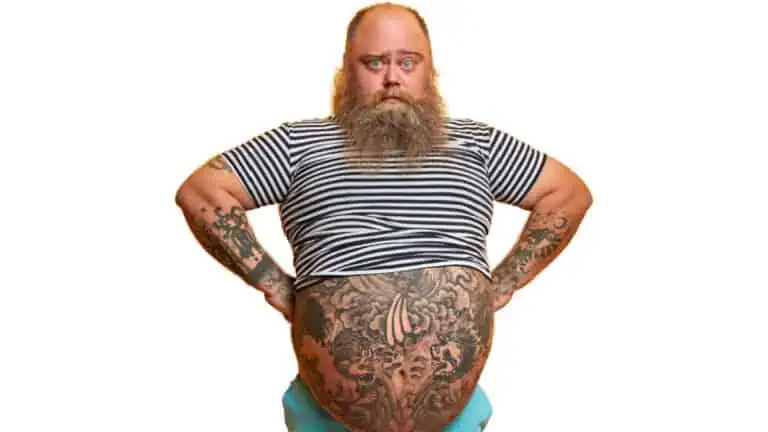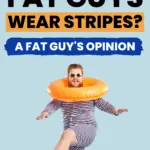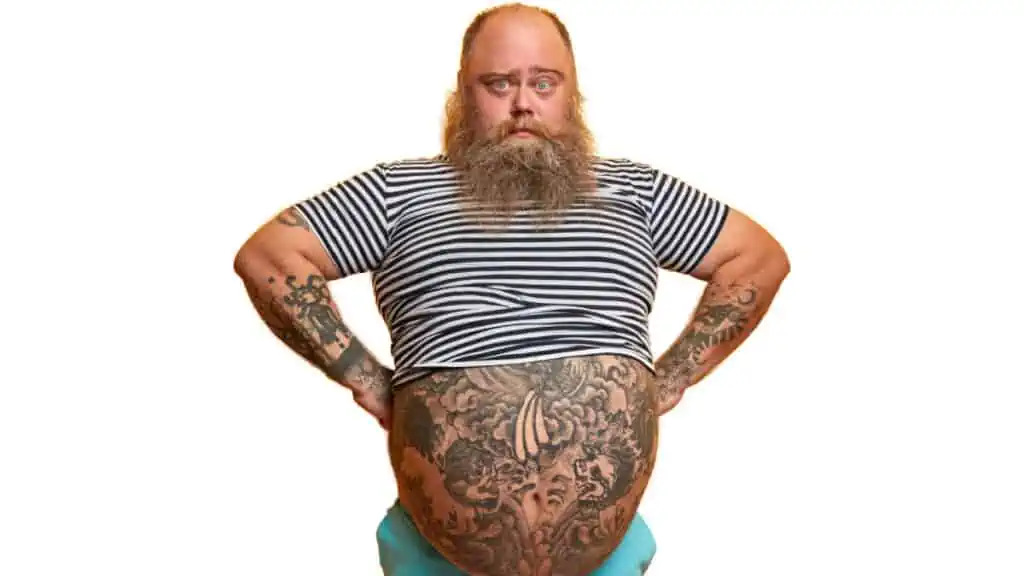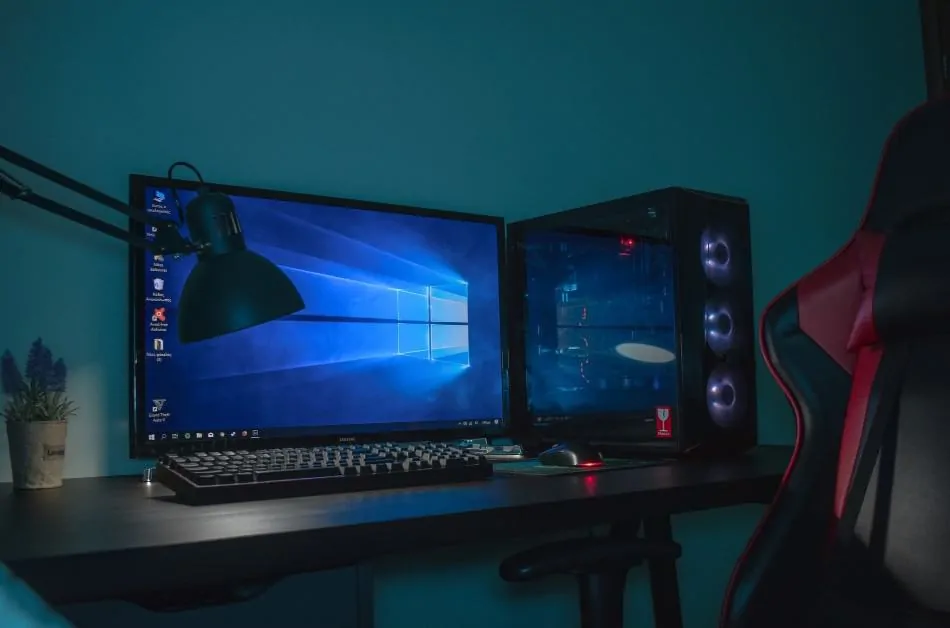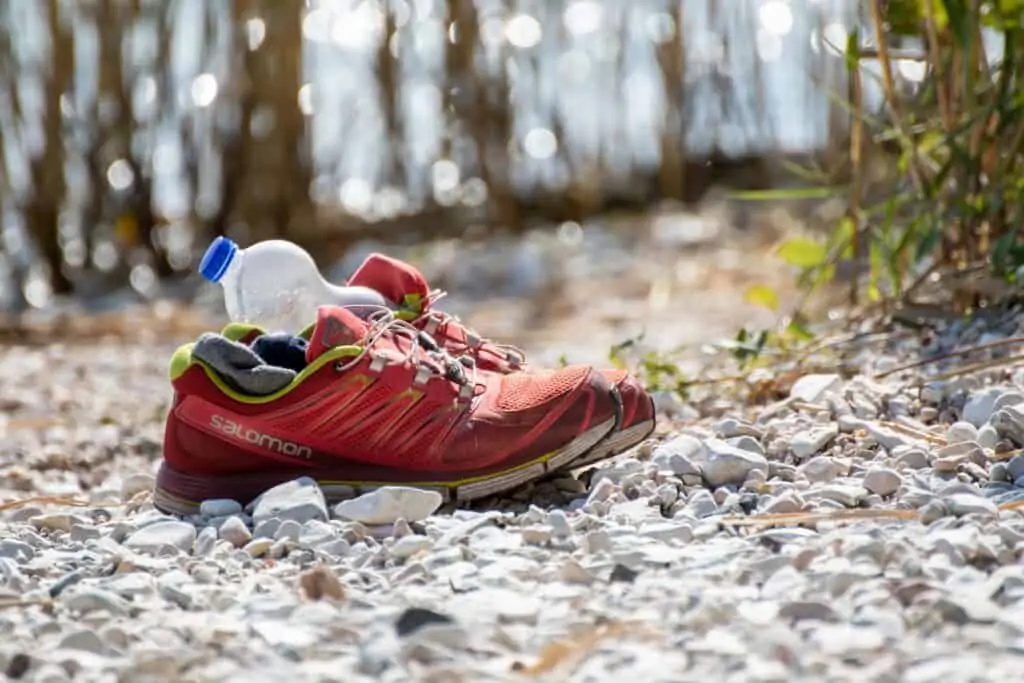As an Amazon Associate I earn from qualifying purchases.
When it comes to big guys’ fashion there is the age-old wives’ tale that we should avoid stripes at all costs. At least, horizontal stripes.
If I had a nickel for every time someone told me, “Vertical stripes make you look taller, and horizontal stripes make you look wider” I’d be able to buy myself at least a king-sized candy bar.
However, just because something is a long-held belief doesn’t mean that it’s true…or necessarily false. So let’s take a look at it and figure out whether fat guys should be wearing stripes or not.
The Quick Answer
Historically, horizontal stripes have been considered taboo for larger men, as they were believed to make them appear even wider. However, recent research has contradicted this widely held belief.
Horizontal stripes are a great addition to a bigger guy’s wardrobe. The Helmholtz Illusion has demonstrated that horizontal stripes can actually make a person appear taller and leaner. This seemingly counterintuitive revelation has led to a change in opinion regarding stripe-wearing for plus-sized men.
Table of Contents
Fat Guys and Stripes: Debunking Myths
Stripes, both horizontal and vertical, have long been a subject of debate in fashion, especially when it comes to dressing for plus-size or fat guys. It’s time to debunk some myths about stripes and learn how they can help create a flattering appearance.
Firstly, there is a common misconception that fat guys should stick to vertical stripes only, as they allegedly make you look slimmer. While it’s true that vertical stripes can draw attention downward and create a flattering effect, horizontal stripes should not be discounted.
Thanks to the Helmholtz Illusion, horizontal stripes can make a person appear leaner and taller as well. In reality, both types of stripes can work for big guys, depending on how they are styled and the proportions of the person wearing them.
So, as with most things in fashion, moderation is key. If you make generally intelligent decisions (such as not wearing both types of stripes together in the same outfit) then you can reasonably wear just about any type of stripes.
For example, you could wear a horizontally striped shirt with solid-colored trousers or a vertically striped pair of pants with a plain, solid-colored tee. This way, you create a sense of harmony in your look without overwhelming everyone who sees you.
In summary, both horizontal and vertical stripes can work for fat guys if styled correctly and used in moderation. By debunking the myths surrounding stripes, you can confidently wear them to flatter your appearance and feel great in your chosen outfit.
Selecting the Right Stripes
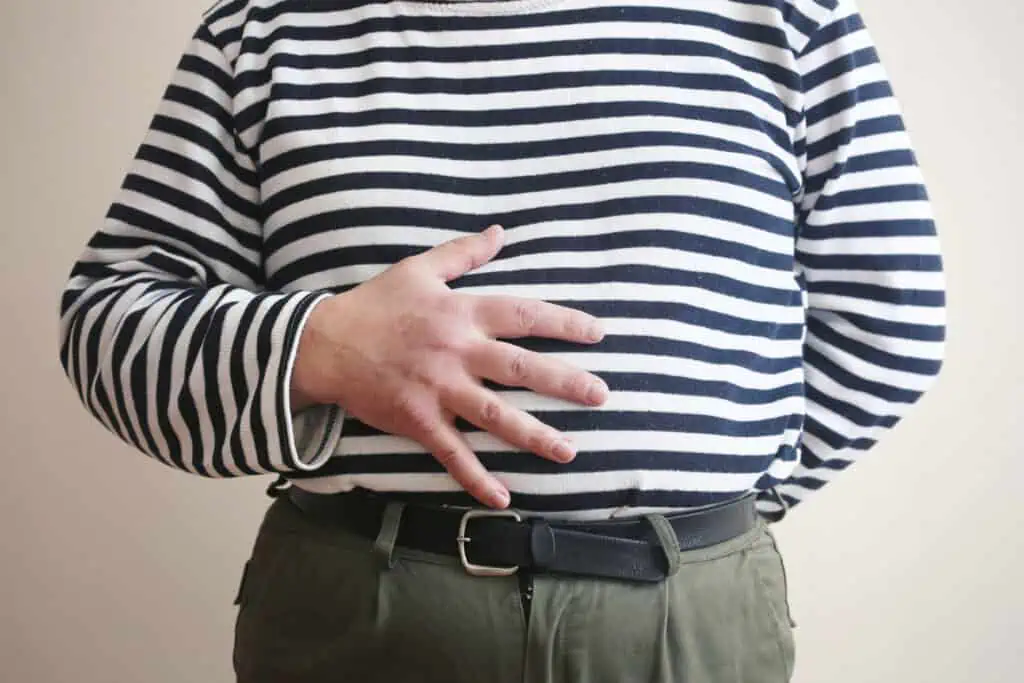
When choosing stripes for bigger guys, it’s essential to keep a few key factors in mind to create the most flattering and stylish look possible. After all, there is more to a striped piece of clothing than just the direction of the stripes. We should also consider spacing, color, and stripe size.
If you’re low maintenance when it comes to fashion you can probably skip this part and just understand that, as long as your stripes are within the realm of “normal” you’re probably not committing too heinous of a crime.
Diagonal and Vertical Stripes
If you want to avoid the horizontal/vertical debate altogether, diagonal stripes may be a great option. Diagonal stripes, in particular, can add some dynamism to your outfit while still maintaining a casual tone. Consider incorporating diagonal stripes in accessories like ties and belts for added visual interest.
Width and Spacing Considerations
More than the direction of the stripes, the overall size and spacing are likely to have the largest impact on your overall look.
Even if your stripes are headed in the right direction it’s possible for your outfit to look unflattering and “busy” which is not what we want as big guys.
So here are a few tips to put you on the right path:
- Opt for thinner stripes: In general, thinner stripes (no matter the direction) have a more elongating and thinning effect than thicker ones. Just don’t go too far the other way and pick extremely thin stripes (pin stripes aside) as they can make the pattern confusing and busy.
- Choose evenly spaced stripes: Having a consistent spacing between stripes can create a more even and visually pleasing look. Uneven spacing can make your proportions look wonky and unflattering.
- Mix and match stripes with solid colors: If you’re not comfortable wearing stripes all over (you probably shouldn’t be unless you’re The Jokes…) you can start off by combining them with solid-colored pieces (think solid pants and a striped shirt or solid shirt and striped tie or blazer).
- Pay attention to the scale of the pattern: Make sure the size of the stripes is proportionate to your body size. I once had a very large-scale pattern vertical striped shirt and it ended up looking like weird suspenders.
Conclusion – A Parting Word About Pants & Shirts
Choose the Right Shirts
Whether or not your wear strips your entire outfit can either be good, terrible, or somewhere in between based on the fit.
This is especially true for your shirts as it’s quite difficult to find a shirt that is fitted properly for big guys.
People seem to think that they can just take a medium shirt and size it up for bigger guys but that’s not quite right. We’re shaped a bit differently than the average person.
So here are a few tips I use to find the best possible shirts, striped or not:
- Fit First: Opt for a shirt that flatters your body type (mine is “marshmallow on sticks). While skinny or slim-fit shirts may not be the best choice, neither are oversized or baggy ones. I typically look for shirts and are “classic” or “relaxed” fit as they usually provide sufficient room in the chest and shoulders without being too baggy. If you’re having trouble with your belly poking out, consider a “tall” version of the same size before you look into sizing up.
- Fabric Choices: While they’re the cheapest, natural, breathable fabrics like cotton or linen are generally more comfortable and adaptable to various body types. Avoid head and stiff materials in favor of organic fibers that have some amount of stretch in them for a better (and more flattering) fit)
- Color and Pattern: “Darker colors are slimming” is another old myth that actually happens to be true…usually. While shopping, stick to shirts in darker colors like navy, black, and dark greens and they tend to hide your body rolls and create a “smoother” effect.
- Neckline and Collar: V-neck shirts can elongate the neck and provide a slimming effect, especially if you have a fat neck as I do and shirts tend to sit really high on your neck. For dress shirts, consider a spread collar over a point collar for a more balanced look if you have a rounder face or wider neck.
- Details and Layering: Layering shirts is a great way to break up your silhouette and distract from the features that you love less. Just don’t stray into “cluttered” territory as that’s less flattering than just plain being fat.
Choose the Right Pants
Now that we’ve got your shirt choice…ironed out… let’s take a quick look at your pants.
I will preface things here by saying that you should probably never wear pants with a significant stripe pattern. I place striped pants right up there with skinny jeans for fat guys.
However, you do you. Here are my best tips for big guys:
- Fit is Key: Look for pants that fit well around the waist, hips, and thighs. Too tight can be uncomfortable and unflattering, while too loose can look sloppy. The right jeans for big guys are generally relaxed or straight-leg cuts as they offer a more comfortable and flattering fit.
- Material Matters: Get pants with a bit of spandex in the blend as they will last longer and be more comfortable than straight cotton weaves. Not to mention you’ll sweat less which is always a bonus.
- Color and Pattern: As I mentioned with shirts, stick to darker colors like navy, black, or dark grey as they tend to be more slimming. If you want to incorporate patterns, avoid overly busy or large prints that might emphasize size or end up in strange locations (like on your nipples or your belly button…)
- Pocket Placement and Detailing: Look for back pockets that are proportionate to the size of the pants; overly small or large pockets can skew perception, especially if you carry a bunch of weight on your backside. I also try to avoid excessive detailing like large logos or flashy embellishments that draw attention to problem areas. So, sorry…your rhinestone jeans are probably out…
- Length and Break: If you’re taller or shorter than average your issues in finding well-fitting pants are even more difficult than for the average fat guy. You’ll want to ensure that the length of the pants is just right — not too long to cause bunching at the bottom and not too short to look like “high-waters.” Try for a slight “break” (the small fold where the pants meet the top of your shoes) as it can offer a polished look.
In conclusion, dressing well as a big guy involves making smart wardrobe choices and focusing on the fit and style of each piece. It’s highly unlikely that an issue such as having stripes or not is going to make or break your outfit.
Just don’t fear the stripes (as fat guys have been taught for years) and you should be alright.
Have fun and be fashionable out there!

